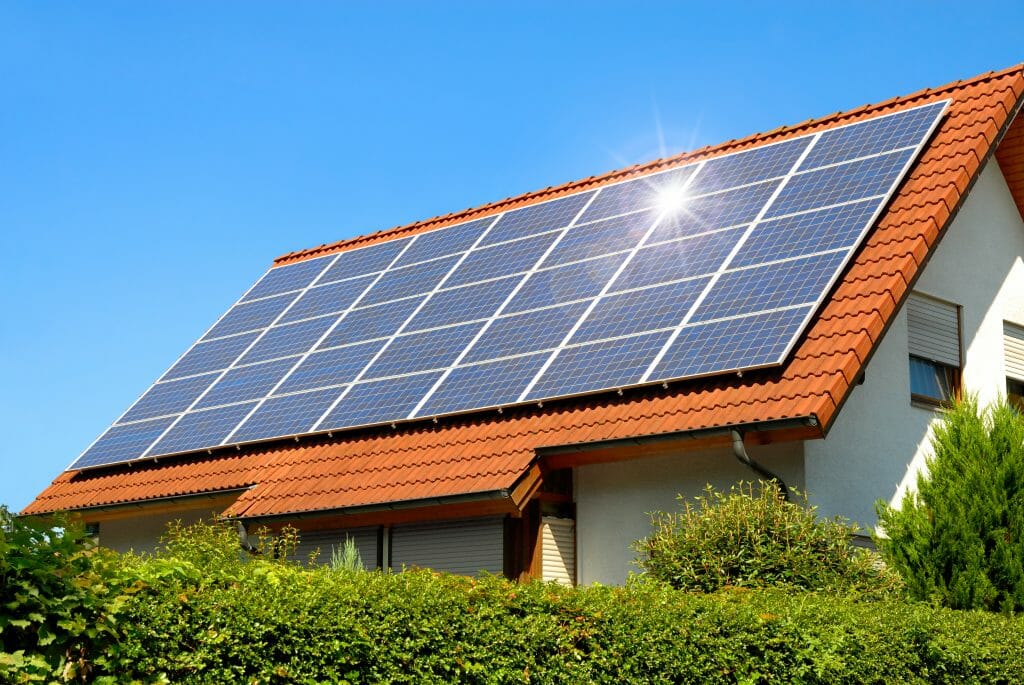Google’s Project Sunroof
June 1, 2018 | Expert Insights

Google has announced the release of its Project Sunroof in the UK. Project Sunroof is an automated software that will help citizens assess the potential for their homes to harness solar energy.
According to some estimates, the cost of solar energy has come down by 80 percent over the last 7 years.
Background
Humans have used the sun as a source of energy for millennia. However, the use of solar energy to make electricity began two centuries ago. Edmond Becquerel was the first scientist to discover the photovoltaic effect, which is the key principle behind solar energy cells. The photovoltaic effect is a process in which two dissimilar materials in close contact can produce an electrical voltage when struck by light or other radiant energy. In 1839, Becquerel found that some materials produced small electric currents when exposed to light.
The first Solar Cell was created in 1883 by inventor Charles Fritts. In 1954, D.M. Chapin, C.S. Fuller, and G.L. Pearson, patented the first photovoltaic (PV) cell that made electricity directly from sunlight using silicon-based solar cells. The first commercial PV cell released in 1955 had an efficiency of only 6%. As of December 2014, the world record for solar cell efficiency at 46.0%. However, a majority of panels have an efficiency rating of 15-17%.
As a renewable resource, solar energy is clean, free, and widely available. According to some estimates, 200,000 times the world’s total daily electricity-generating capacity is received by the Earth in the form of solar energy. However, solar energy has high costs of collection, conversion, and storage. Nevertheless, with increasing research in the field, costs have come down in recent years. Today, solar panels are used in streetlights, cookers, solar-thermal power plants, handheld calculators, and spacecrafts.
Google LLC is an American multinational technology company that was founded in 1998 by Larry Page and Sergey Brin while they were Ph.D. students at Stanford University, California. Alphabet Inc was created in October 2015 through a corporate restructuring of Google and became the parent company of Google and other former Google subsidiaries. The two founders of Google assumed executive roles in Alphabet, with Larry Page serving as CEO and Sergey Brin as President. Alphabet declared that it made $3.5 billion in net income and saw sales of $26 billion in the second quarter of 2017.
Analysis
Google has launched its Project Sunroof initiative in the UK. This initiative combines data from Google Earth and Google maps to estimate the potential for solar panels in British homes. The automated software was developed in collaboration with Germany energy firm EON and software company Tetraeder. It was first launched in the US in 2015, and later in Germany.
“We are excited to help people in the UK make more informed choices about installing solar panels on their rooftops and transition to renewable energy sources," said Nicole Lombardo, Google’s head of partnerships. The software studies roof angles, weather data, and the position of the sun to approximate a building’s solar power potential. It also gives an estimate for savings.
Ikea and Tesla both offer similar services. Experts believes that these services such lower barriers and make solar energy more accessible. Jonathan Marshall, analyst at the Energy and Climate Intelligence Unit said, "By analysing the roof shape, they will take out one of the steps that you would have to go through to get solar panels installed. The speed of the process means that if you're half-tempted by the idea, you're more likely to go ahead with it."
Google is the world’s largest corporate buyer of renewable power. It reached 100% renewable energy in April this year. Despite President Trump’s withdrawal from the Paris Agreement, and his imposition of 30% tariffs on solar panels earlier this year, some parts of the US have continued to develop solar energy. In May, California became the first US state to order that all residential buildings built after 2020 would have to have solar panels installed. The state has already ordered that 50% of all electricity must come from non-carbon emitting sources by 2030.
The Indian government has also focussed on developing solar technology. In 2015, Indian Prime Minister Narendra Modi proposed the formation of the International Solar Alliance (ISA), a treaty-based inter-governmental organisation intended to foster the development of clean energy technology. In 2016, the government announced that it was planning a 210 billion-rupee ($3.1 billion) package of state aid for India’s solar panel manufacturing industry. Read more here.
Assessment
Our assessment is that due to climate change, it is becoming increasingly essential to develop alternate sources of energy. We believe that the objective of such technologies is to properly harness green energy by providing optimal solutions using data analytics. While solar energy has limitations, it is becoming more accessible. Tropical countries, particularly those that lie in the Torrid Zone between the Tropics of Cancer and Capricorn have enormous potential to exploit solar resources.








Comments